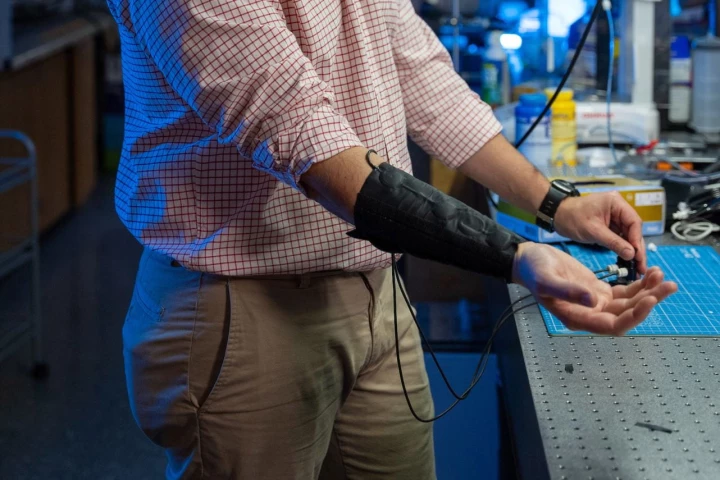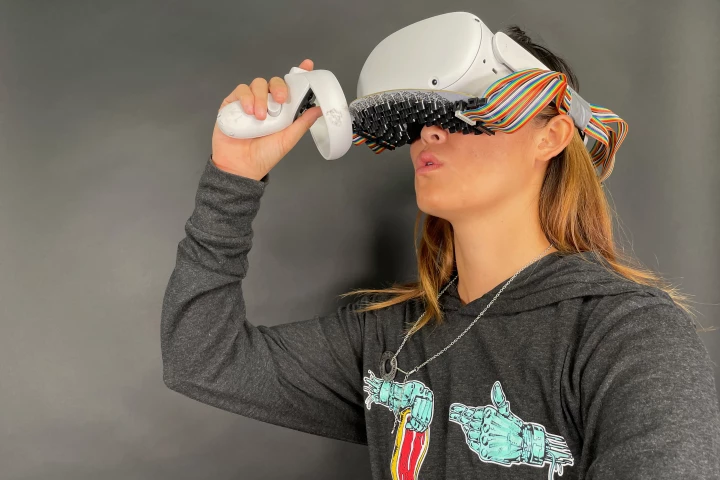Haptics
-
Haptic feedback systems, in which users receive tactile signals, definitely show a lot of promise … but they can be electronically complex. An experimental new setup makes things simpler, by incorporating pneumatic pouches into wearable sleeves.
-
Blind people using white canes are limited in how fast they can walk, as they have to wait for their cane to hit obstacles before going around them. The NextGuide cane is different, in that it steers users around obstacles that they've yet to reach.
-
While there are already haptic feedback VR gloves that provide a simulated sense of touch to users, they typically cost at least a few thousand dollars. The Pulse glove is aimed at making the tech more accessible, in that it's priced at just US$299.
-
Last year we heard about an "electronic skin" developed at City University of Hong Kong, which delivers tactile sensations to wearers. The university has now gone one better, with an e-skin that both senses and reproduces users' touches.
-
Entering passcodes on smartphones can be difficult for the blind, as they can't see the screen, nor can they tell if someone else is peeking at it. The OneButtonPIN app is designed to help, by utilizing vibrations instead of visuals.
-
While technology is making strides in absorbing our eyes and ears in virtual worlds, it’s harder to engage senses like touch. Engineers have now developed WeTac, a thin, wearable electronic "skin" that provides tactile feedback to users in VR and AR.
-
Although there already are experimental "telehaptic" systems that allow people to send and receive tactile sensations, they tend to be bulky and awkward. A new one is much slimmer and thus more practical, thanks to the use of piezoelectric materials.
-
Redmond-based HaptX is preparing for business in the metaverse age with the launch of a pair of "ground-breaking" haptic gloves that allow enterprise users to get to grips with objects in the virtual workplace.
-
Along with providing users with sights and sounds, some VR systems also deliver tactile sensation to the hands. A new ultrasound-based setup, however, lets users feel the virtual world on and in their mouths – without making physical contact.
-
The West Japan Rail Company has released video of its new humanoid heavy equipment robot. Mounted on the end of a crane, this gundam-style robot torso mimics the arm and head motions of a human pilot, who sees through the robot's eyes via VR goggles.
-
Haptic feedback can give virtual experiences an extra dimension, but it’s hard to achieve. Tech startup Emerge has now unveiled the Emerge Wave-1, a device that pairs with a VR headset and emits ultrasonic waves that let users feel virtual objects.
-
Last month, social media giant Facebook rebranded as Meta and revealed its vision for the future of online interaction. Much of the news so far has focused on what users will see, but the company is also working on bringing touch to the Metaverse.
Load More











